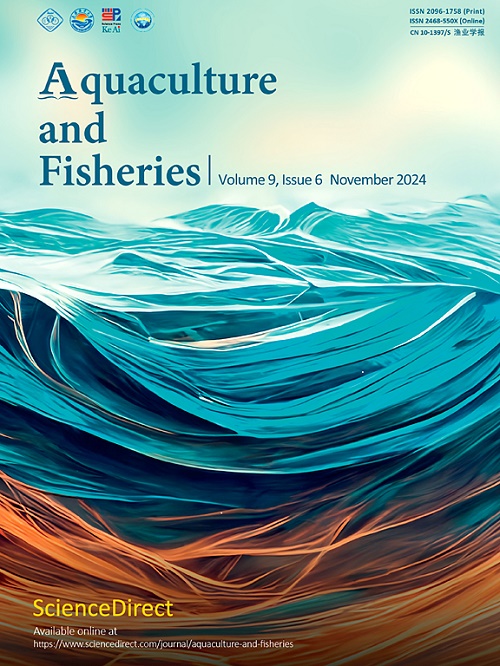浸泡时间是否会影响人工光照对雪蟹(Chionoecetes opilio)盆捕效率的影响?
Q1 Agricultural and Biological Sciences
引用次数: 0
摘要
在巴伦支海商业雪蟹(Chionoecetes opilio)渔业中,提高锥形锅的捕捞效率对该行业的盈利能力至关重要。发光二极管(led)先前已被测试用于提高雪蟹笼的捕获效率。这些早期的实验显示了不同的结果,从雪蟹捕获量大幅增加到没有显著影响。这些实验采用不同的锅浸时间;然而,浸泡时间可能会影响led对捕获效率的影响。在商业雪蟹养殖中,锅泡时间是变化的,这在早期测试led效果的实验中没有考虑到。因此,本研究考察了在巴伦支海雪蟹渔业中,浸泡时间是否可以解释在浸泡时间为2 ~ 14天的情况下,有led和没有led的雪蟹锅相对捕获效率的差异。对于目标尺寸(甲壳宽度≥95 mm)的雪蟹,除一个浸泡时间为6天的实验外,结果表明,led锅的捕获效率提高了10%至30%。然而,实验结果受到很大的不确定性,除了一个浸泡时间为5天的实验外,估计的增加是不显著的。此外,锅浸时间不影响白光led对捕获效率的影响。本文章由计算机程序翻译,如有差异,请以英文原文为准。
Does soak time influence the effect of artificial light on catch efficiency in snow crab (Chionoecetes opilio) pot fishery?
In the Barents Sea commercial snow crab (Chionoecetes opilio) fishery, an increase in catch efficiency of the conical pots is important for the profitability of the industry. Light emitting diodes (LEDs) have previously been tested for increasing catch efficiency of the snow crab pots. These earlier experiments have shown varying results ranging from large increase in snow crab catches to no significant effect. These experiments have used different pot soaking times; however, the soaking time might affect the impact of LEDs on catch efficiency. In commercial snow crab fishery, the pot soak time is varying which has not been considered in earlier experiments testing the effect of LEDs. Therefore, this study examined whether pot soaking time can explain the observed differences in relative catch efficiency of snow crab pots with and without LEDs with soak times ranging from 2 to 14 days in the Barents Sea snow crab fishery. For target sizes of snow crab (≥95 mm carapace width), results indicated an increase in catch efficiency between 10 and 30% for pots with LEDs with exception of one experiment using six days soak time. However, experimental results were subjected to large uncertainties and, except from one experiment with five days soak time, the estimated increases were nonsignificant. Furthermore, the pot soak time was not found to impact the effect of white LEDs on capture efficiency.
求助全文
通过发布文献求助,成功后即可免费获取论文全文。
去求助
来源期刊

Aquaculture and Fisheries
Agricultural and Biological Sciences-Aquatic Science
CiteScore
7.50
自引率
0.00%
发文量
54
审稿时长
48 days
期刊介绍:
 求助内容:
求助内容: 应助结果提醒方式:
应助结果提醒方式:


